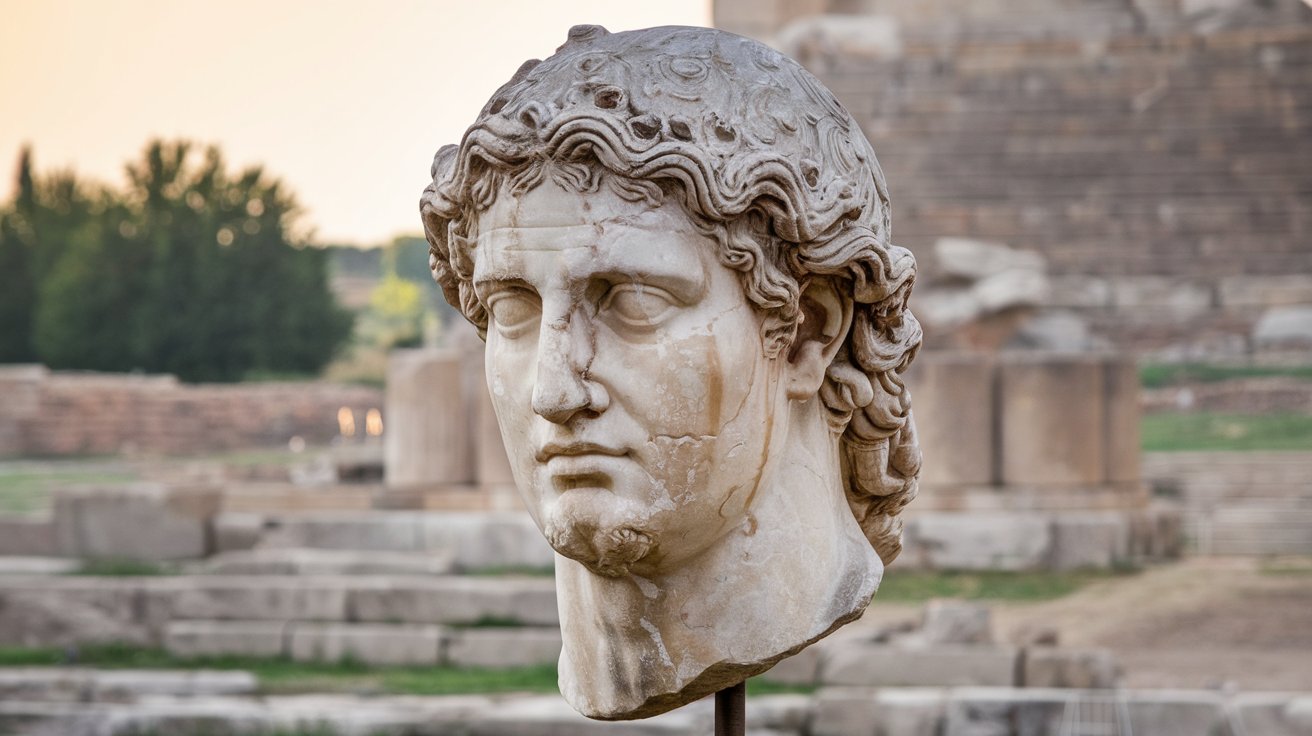
What makes the Apollo Head Philippi coin so special? This ancient coin, minted in the city of Philippi, Greece, stands out due to its rich history and intricate design. Apollo, the Greek god of music, prophecy, and healing, is prominently featured on one side, showcasing the artistry of the time. The other side often depicts various symbols or figures significant to the region's culture and history. Collectors and historians alike value this coin not just for its beauty but for the stories it tells about ancient Greek civilization. Owning an Apollo Head Philippi coin is like holding a piece of history in your hand.
Key Takeaways:
- The Apollo Head Philippi coin offers a glimpse into ancient Greek culture, economy, and artistry, showcasing the significance of Apollo and the city of Philippi during Hellenistic and Roman periods.
- These coins played a crucial role in the economy and culture of ancient Philippi, serving as everyday currency, reinforcing religious beliefs, and contributing to the prosperity of the region.
The Apollo Head Philippi Coin: A Glimpse into Ancient History
The Apollo Head Philippi coin is a fascinating artifact from ancient times. These coins offer a window into the past, showcasing the artistry, culture, and economy of the era. Let's dive into some intriguing facts about these historical treasures.
Origins and Historical Context
Understanding the background of the Apollo Head Philippi coin helps appreciate its significance.
-
The Apollo Head Philippi coin was minted in the ancient city of Philippi. This city, located in what is now modern-day Greece, was an important center during the Hellenistic and Roman periods.
-
Philippi was founded by King Philip II of Macedon in 356 BCE. The city was named after him and became a crucial military and economic hub.
-
The coin features the head of Apollo, the Greek god of music, poetry, and prophecy. Apollo was a significant deity in Greek mythology, symbolizing harmony and order.
-
These coins were minted during the reign of Alexander the Great. Alexander, the son of Philip II, expanded the Macedonian Empire and spread Greek culture across the known world.
Design and Symbolism
The design of the Apollo Head Philippi coin is rich with symbolism and artistry.
-
The obverse side of the coin typically depicts the head of Apollo. This side showcases the god with laurel leaves, a symbol of victory and honor.
-
The reverse side often features a tripod or other symbols associated with Apollo. The tripod was linked to the Oracle of Delphi, where Apollo was believed to deliver prophecies.
-
The coins were made from silver, a valuable metal in ancient times. Silver coins were widely used for trade and commerce, reflecting the economic importance of Philippi.
-
The craftsmanship of these coins is remarkable, with intricate details and high-quality engraving. Ancient artisans took great pride in their work, creating coins that were both functional and beautiful.
Economic and Cultural Impact
The Apollo Head Philippi coin played a significant role in the economy and culture of the time.
-
These coins were used for everyday transactions, from buying goods to paying taxes. They were an essential part of the economic system in ancient Philippi.
-
The widespread use of these coins helped standardize currency in the region. This standardization facilitated trade and commerce, contributing to the prosperity of Philippi.
-
Coins like these were also used to pay soldiers and fund military campaigns. The wealth generated from mining and trade supported the expansion of the Macedonian Empire.
-
The imagery on the coins reinforced the cultural and religious beliefs of the time. By featuring Apollo, the coins reminded people of the god's importance and the city's connection to divine favor.
Archaeological Discoveries
Archaeological finds have provided valuable insights into the Apollo Head Philippi coin.
-
Many of these coins have been discovered in archaeological excavations. These finds help historians piece together the history and economy of ancient Philippi.
-
Some coins have been found in hoards, suggesting they were buried for safekeeping. Hoards often indicate periods of conflict or uncertainty when people hid their valuables.
-
The condition of the coins varies, with some well-preserved and others heavily worn. The state of the coins can provide clues about their circulation and usage.
-
Coins are often found alongside other artifacts, such as pottery and tools. These finds help create a more complete picture of daily life in ancient Philippi.
Modern Significance
The Apollo Head Philippi coin continues to captivate historians, collectors, and enthusiasts.
-
These coins are highly sought after by collectors and numismatists. Their historical significance and artistic beauty make them valuable additions to collections.
-
Museums around the world display Apollo Head Philippi coins. These exhibits help educate the public about ancient history and the importance of coinage.
-
Scholars study these coins to learn more about ancient economies and societies. The coins provide tangible evidence of historical events and cultural practices.
-
The Apollo Head Philippi coin is a symbol of the enduring legacy of ancient Greece. Its continued relevance highlights the lasting impact of Greek culture and civilization.
Fun Facts and Trivia
Let's explore some lesser-known facts and trivia about the Apollo Head Philippi coin.
-
The laurel wreath on Apollo's head symbolizes victory and achievement. This imagery was often used to honor heroes and victors in ancient Greece.
-
Some coins feature inscriptions in Greek, providing valuable linguistic insights. These inscriptions can include the names of rulers, cities, or deities.
-
The weight and size of the coins could vary, reflecting different denominations. This variation allowed for a range of transactions, from small purchases to larger payments.
-
Coins were often minted in large quantities, making them widely available. The widespread distribution of these coins helped integrate the economy of the region.
-
The Apollo Head Philippi coin is an example of Hellenistic art. This period saw a blend of Greek and local artistic traditions, resulting in unique and beautiful creations.
-
Some coins have been found in shipwrecks, indicating their use in maritime trade. These finds highlight the importance of sea routes for commerce in ancient times.
-
The coins were sometimes used as offerings in religious rituals. People would dedicate coins to temples or deities as a form of worship and devotion.
-
The Apollo Head Philippi coin has inspired modern reproductions and replicas. These replicas allow people to own a piece of history without the high cost of an original.
-
Coins can provide clues about ancient metallurgy and mining practices. The composition and quality of the metal reveal information about resource extraction and processing.
-
The study of ancient coins is known as numismatics. Numismatists analyze coins to understand historical economies, societies, and cultures.
-
Coins like these were often used to spread political messages. Rulers would use coinage to promote their image and authority throughout their territories.
-
The Apollo Head Philippi coin is a testament to the skill of ancient engravers. The detailed and precise work on these coins showcases the high level of craftsmanship.
-
Some coins have been found in graves, suggesting their use in burial practices. These coins may have been placed with the deceased as offerings or to ensure safe passage to the afterlife.
-
The Apollo Head Philippi coin reflects the influence of Greek culture on the region. The adoption of Greek deities and imagery highlights the spread of Hellenistic traditions.
-
Coins can help date archaeological sites and layers. The presence of specific coin types can provide a chronological framework for excavations.
-
The Apollo Head Philippi coin is a valuable resource for historians and archaeologists. Its study continues to reveal new insights into ancient history and culture.
-
These coins are a tangible connection to the past, allowing us to hold history in our hands. The Apollo Head Philippi coin remains a fascinating and enduring symbol of ancient civilization.
Final Thoughts on Apollo Head Philippi
Apollo Head Philippi offers a fascinating glimpse into ancient history. This artifact, with its intricate design and historical significance, sheds light on the artistry and culture of its time. Found in the ancient city of Philippi, it represents the reverence for Apollo, the Greek god of music, prophecy, and healing. The craftsmanship showcases the skill of ancient artisans, making it a valuable piece for historians and art enthusiasts alike. Whether you're a history buff or just curious about ancient civilizations, Apollo Head Philippi is a remarkable example of our shared heritage. Its discovery not only enriches our understanding of the past but also inspires appreciation for the timeless beauty and complexity of ancient art. So next time you come across a piece of history like this, take a moment to marvel at the stories it holds.
Frequently Asked Questions
Was this page helpful?
Our commitment to delivering trustworthy and engaging content is at the heart of what we do. Each fact on our site is contributed by real users like you, bringing a wealth of diverse insights and information. To ensure the highest standards of accuracy and reliability, our dedicated editors meticulously review each submission. This process guarantees that the facts we share are not only fascinating but also credible. Trust in our commitment to quality and authenticity as you explore and learn with us.


